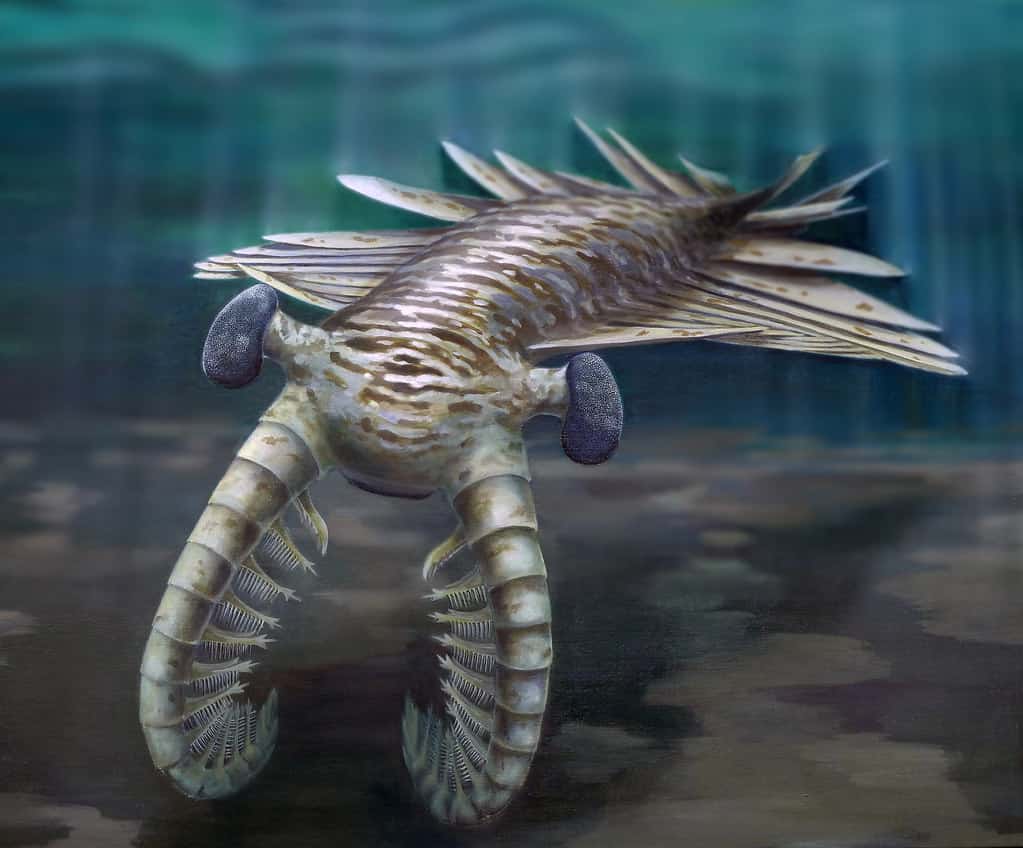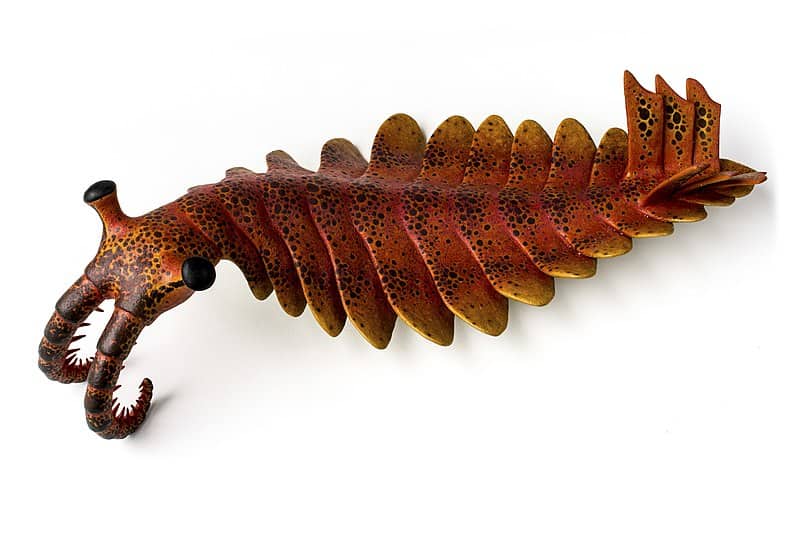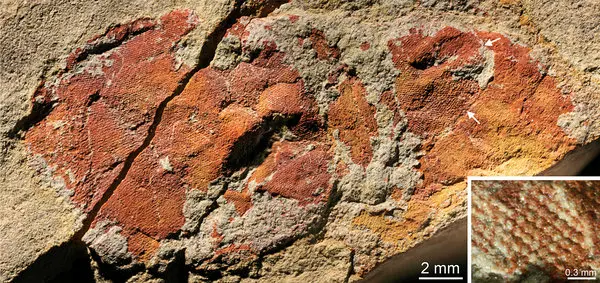Well no, they’re not really pointed at you, and actually, they’re not really pointed at anyone. This creature called Anomalocaris lived during the Cambrian, some 500 million years ago. But this amazing fossil can teach us a lot about evolution and what life was like in those times.

As the name implies, Anomalocaris is indeed an anomaly — it’s an animale that’s not quite like any other. Its name derives from the Greek words for “anomalous” and “shrimp”, because although it’s not technically a shrimp, it bears some similarities to one.
Despite its shrimp-like appearance, Anomalocaris was a fierce predator that preyed on other marine animals using its powerful jaws and sharp spines. At about one meter (three feet) long and shaped like a flat oval, Anomalocaris would have been the king of the seas — few animals could compete with it in size. Instead of fins, it used a series of elongated paddle-like structures running down both edges of the body to move through the water. They had two appendages that they would use to quickly shovel prey onto their mouth, which was located on the underside.
But perhaps its most striking feature was its eyes.
It had large, bulging eyes, which may have been its most evolved feature. Some spectacular, 515 million-year-old fossils from Australia showed that they were in fact compound eyes shaped like small lenses, much in line with what we see in today’s insects and arthropods.
The eyes of Anomalocaris featured 16,000 lenses and offered a resolution rivaling the best we see in today’s world in the dragonfly (which has 28,000 lenses), but keep in mind we’re talking about an animal half a billion years ago. In fact, some studies suggest that Anomalocaris may have had a dichromatic vision, much like many of today’s mammals. Its vision must have been an order of magnitude better than that of the trilobites, long thought to have had the best vision of their era.

As it’s often the case with fossils so old, there’s also a lot of controversy surrounding Anomalocaris. It was initially misidentified and misclassified for decades, and there’s still debate as to whether some of the fossil parts associated with it actually belong to it at all. Early paleontologists couldn’t believe this creature exists at all. Its grasping arms were first discovered in 1892, and thought to be tails of shrimp-like animal; its ring-shaped mouth was thought to belong to a jellyfish; its body was believed to belong to a sponge. It was only in the 1980s that paleontologists convincingly proved that all the body parts belong to the same animal, and the animal is a stunning one indeed. But even then, the controversy about Anomalocaris didn’t subside.
Paleontologists have long suggested that Anomalocarids were the apex predators of the Cambrian seas, shoving many smaller creatures into their jaws. This claim is supported by the fact that some trilobites seem to bear scratch marks from Anomalocaris, and Anomalocaris coprolites were found to contain trilobite parts. This makes a lot of sense: with its extremely well-developed visual system, it could have easily tracked down prey and then used its appendages to hunt it. This also fits in with another popular, but controversial theory about the Cambrian: that life exploded in the Cambrian partially because the first large predators drove an evolutionary arms race that led to new forms of protection, fitting in nicely with the idea of an extremely competitive environment.
But the problem with this idea is that it’s not clear how Anomalocaris could have broken through the trilobites’ thick defensive shell. There are some theories that attempt to explain this (like how they would have broken the prey’s skeleton at the cuticles or simply fed on trilobites that had just molted), but the evidence for now is not conclusive.
Because the fossils are so old (almost 8 times older than the Tyrannosaurus Rex), they’re often degraded and less clear, which makes interpretation all the more difficult. This being said, however, some Anomalocaris fossils are absolutely magnificent. It’s remarkable to see just well preserved and spectacular the eyes — so well preserved in some fossils that if you look with a microscope, you can even see the eye structure.

Ultimately, we’re stuck with what appears to be an apex predator that still hides many mysteries — a predator with extremely evolved eyes but otherwise, quite different from modern arthropods. It was only after researchers discovered another ancient arthropod, a “missing link” in arthropod evolutionary history, that researchers started understanding how Anomalocaris links with the rest of its evolutionary tree.
For hundreds of millions of years, Anomalocaris was likely the animal with the most eyes. You can make an argument that the lenses in compound eyes aren’t technically ‘eyes’, and by that definition, the animal with the most eyes is probably the scallop, which has 50-100 ‘true’ eyes. But the lenses inside compound eyes (technically called ommatidia) function as independent photoreception units with an optical system. If we accept them as eyes, the the animal with the most eyes that we know of is the dragonfly: each eye has around 30,000 telescope-shaped ommatidia.
Was this helpful?



